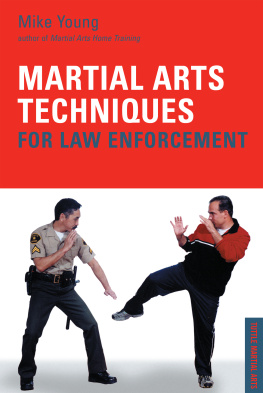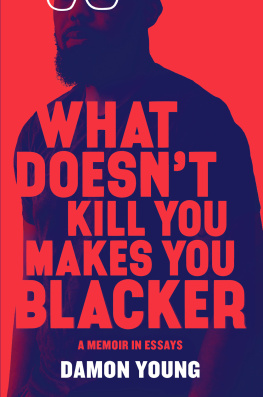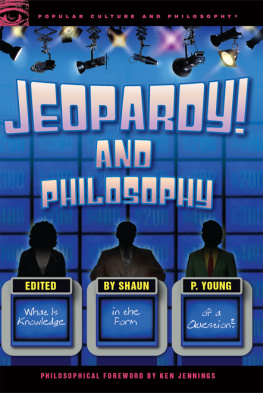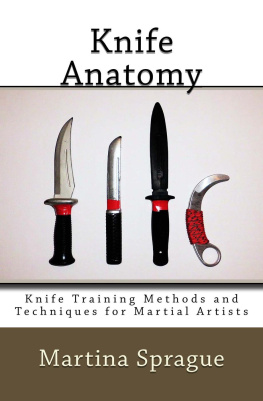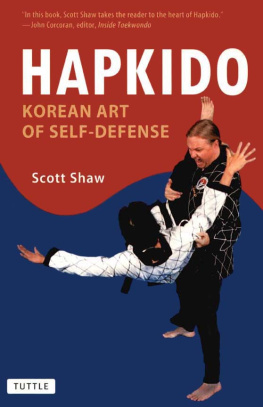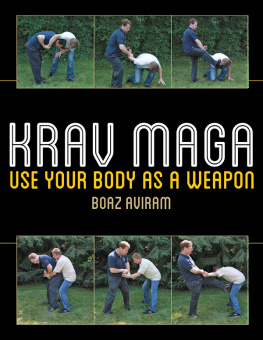
A BOUT THE A UTHOR

Sergeant Mike Young has been a deputy sheriff for the Los Angeles Sheriffs Department for over twenty-three years. He has worked in a variety of assignments, including the mens central jail, the womens jail, patrol, the Detective Bureau, and the Training Bureau.
Young has practiced martial arts for over thirty-five years and is constantly striving for ways to improve his skills. He has trained in Brazil, France, Belgium, Taiwan, Hong Kong, China, Indonesia, and New Zealand. He has studied defensive tactics in martial arts systems such as the Gracie jiujitsu, GRAPPLE, Monodnock, ASP straight baton, and others, always looking for practical applications for police work.
Young has also won over ten gold medals in the California Police Olympics in boxing, as well as over thirty gold medals in the California and World Police and Fire Games in karate.
He has received numerous commendations for the defensive tactics classes that he has taught for police officers, SWAT-team officers, federal agents (of the Drug Enforcement Agency; Bureau of Alcohol, Tobacco, and Firearms; and Immigration and Naturalization Service), citizens (including chaplains, doctors, womens groups, and children), besides numerous commendations for his outstanding police work.
Young also put together a comprehensive forty-hour Defensive Tactics for Women in Law Enforcement class that addresses self-defense issues that were not being addressed in traditional defensive tactics classes.
He most recently received his departments Distinguished Service Award in recognition of his outstanding effort in contributing to the goals of the department and reflecting an unusual degree of personal initiative.
Young has written countless articlesincluding many cover storiesfor martial arts magazines. He has also written a book, Martial Arts Home Training, which shows readers how to build their own martial arts training equipment.
Mike Young can be reached at mrockdown@hotmail.com


A CKNOWLEDGMENTS

I would like to thank Elsie S. Young, Richard K. L. Young, Margarethe F. Young, Pat Young, Kathy Young, Dean Sensui, Owen Uyehara, Walter Wong, Fred Degerberg, Jim Leone, Mark V. Wiley, Randall Roberts, Dave Infante, Ellen Ercergovich, Yancy Walden, Derek Kunishima, Don Lin, and Buddy Fowler. They helped make this book a reality. Without their support, guidance, and inspiration, this book would never have been completed.
I would also like to thank my law enforcement family, who helped guide me through a safe and rewarding profession and shape my defensive tactics skills. These people are listed in the order that they came into my life: Deputy James Mahone, Sergeant Dale Schirman, Deputy Gene Reed, Lieutentant Mike McAndrews, Sergeant Easie Williams, Corrections Officer Ernie Tell, Sergeant Al Fraijo, Deputy Roy Burns, Deputy John Fernandez, Lieutenant Robert Dillard, Sergeant Robert Alcaraz, Reserve Deputy Hank Nagamine, Sergeant Byron Woods, Sergeant Paul Peitrantoni, Sergeant Roberto Causey, Captain Mitch Tavera (Inglewood Police Department), Sergeant Dave Infante, Sergeant Danny Rosa, D. A. Investigator Darren Levine, Sergeant Derek Sill, Officer Tony Pasqual (Los Angeles Police Department), Deputy Kenji Mashiko, Deputy Mike Sherod, Sergeant Sam Mahi (Honolulu Police Department), Sergeant Dave Lewis, Sergeant Manny Anaya, Lieutenant Roy Levario, and Lieutenant Mark Relyea.
I cannot forget to thank the members of my own Los Angeles Sheriffs Department, especially Sheriff Leroy Baca and Undersheriff William Stonich, for their unwavering support throughout my career.
I also want to thank my martial arts family, who helped me develop many of my techniques and apply them in a law enforcement environment. These people include Richard Miura (wado ryu karate), Alfred Dela Cruz (chuan fa kajukenbo), Master Hong (tae kwon do and hapkido), Raymond Tabosa (escrima), Pat Hodges (northern shaolin, pa kua), Fu Ling Tung (tai chi chuan), Calvin Yamamoto (kenshu kan karate), Jason Yoshida (judo), Eiichi Jumawan (boxing), Kimo Pang (internal shaolin), Hide Hirayama (taido), Danny Cacho (wing chun), Daniel Duby (savate), Danny Inosanto (kali/jeet kune do), Richard Bustillo (kali/jeet kune do), Bernie Pock (northern praying mantis), Richard Sylla (savate), Bira Almeidia (capoeira), Arjan Surchai (Thai boxing), Camisa (capoeira), Fidel Fraijo (boxing), Huang Ken Wang (shuai chiao), Daniel Ng (eagle claw kung fu), Andy Lau (eagle claw kung fu), Walter Wong (wing chun), the Machado brothers (Brazilian jiujitsu), Herman Suwanda (mande muda silat), Jerry Walker (lua), Tim Pahi (mao mao), Ron Balicki (shootwrestling and kali), Rorion Gracie (Gracie jiujitsu), Bob Koga (aikido), Tom Meadows (combat whip/latigo y daga), Erik Paulson (shooto), Gene Labell (wrestling), and Rinaldo Santos (Brazilian jiujitsu).

A PPENDIX A

Assaults on Law
Enforcement Personnel
The FBI Uniform Crime Reporting (UCR) program reports statistical data on assaults on law enforcement personnel throughout the country on a yearly basis. Between 1986 and 1995, the total number of assaults reported was 653,496! (There were 56,686 assaults in 1995 alone!)
Nationally, the overwhelming majority of these assaults occurred while an officer was on a disturbance call (family quarrels, man with a gun, etc.). The second leading category was assaults that occurred while the officer was attempting to arrest a suspect. The third most common assault was of officers handling or transporting suspects in custody.
In California, the Law Enforcement Officers Killed and Assaulted in the Line of Duty organization (LEOKA) reports that thirty-three officers were killed between 1995 and 1999. The majority of these assaults occurred when a suspect resisted arrest.
The study also revealed that most officers facing a life-threatening attack were not able to fire their weapons during the conflict! This is the main reason I am so passionate about developing an officers personal defensive tactics skills.
The California study also provided a statistical profile of the types of assaults that occur to officers while on duty. Fully 79 percent of all assaults in California involved hands, fists, or feet, while 13.6 percent involved other types of deadly weapons2.5 percent involved a knife and 4.9 percent involved a firearm.


Reasonable Force
Before we look at specific martial arts, we should first review and understand the underlying justifications for using physical force.
As law enforcement officers, we have a positive duty to use force when necessary to discharge our duty. Whether we use verbal commands, professional presence, control holds, pepper spray, personal weapons, or firearms is influenced by many factors. Which force option we choose depends on the particular circumstances of each situation, including our level of on-the-job experience, size and weight, physical ability, and personal confidence.

